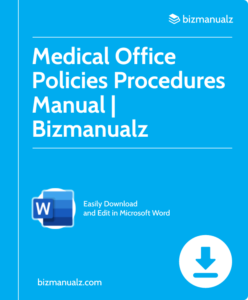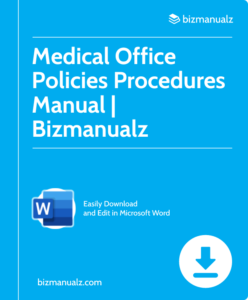What Are Core Medical Office Processes?

Are you uncertain about the processes involved in running a medical office? Do you struggle to keep up with the demands of managing patient records, appointments, and billing? As a healthcare provider, it is crucial to have a thorough understanding of core medical office processes in order to provide efficient and effective care. In this article, we will explore the essential processes that are integral to the smooth functioning of a medical office, giving you the knowledge and tools to streamline your operations. Trust us, this is a must-read for any healthcare professional. What Are Core Medical Office Processes?
What Are Core Medical Office Processes?
In a medical office, core processes are crucial for the efficient functioning of the practice. These processes encompass a variety of activities, including:
- patient registration
- appointment scheduling
- medical billing
- record keeping
The main objective of core medical office processes is to ensure smooth operations and deliver high-quality patient care. By streamlining these processes, healthcare providers can optimize their workflow, minimize administrative errors, and improve patient satisfaction. The effective use of technology, such as electronic health records and practice management systems, can greatly aid in the management of core medical office processes.
Why Are Core Medical Office Processes Important?
Core medical office processes play a crucial role in the efficient functioning and success of healthcare facilities. These processes are essential for ensuring smooth operations, maintaining patient satisfaction, and providing effective patient care.
- Patient Management: Well-established processes for appointment scheduling, patient registration, and medical record management greatly improve the patient experience by reducing wait times and increasing satisfaction.
- Billing and Insurance: Proper management of billing and insurance processes is vital for accurate reimbursement, financial stability, and compliance with healthcare regulations.
- Workflow Optimization: Effective processes for triage, referrals, and test result management facilitate communication and coordination among healthcare providers, ultimately leading to better patient outcomes.
- Regulatory Compliance: Adhering to core processes is crucial for meeting healthcare regulations, safeguarding patient privacy, and maintaining the integrity of medical records.
- Quality Improvement: Regular monitoring and evaluation of core processes enables healthcare facilities to identify areas for improvement, resulting in enhanced patient safety and overall quality of care.
What Are the Benefits of Implementing Core Medical Office Processes?
Implementing core medical office processes brings numerous benefits to healthcare practices. These benefits include:
- Improved efficiency
- Enhanced patient experience
- Accurate billing and coding
- Compliance and risk management
- Better collaboration and communication
By implementing these core processes, healthcare practices can optimize their operations, increase patient satisfaction, and improve overall performance.
What Are the Key Elements of Core Medical Office Processes?
The smooth functioning of a medical office relies heavily on well-established and efficient processes. These core processes encompass a range of tasks, from scheduling appointments to managing patient information and handling insurance claims.
In this section, we will delve into the key elements of core medical office processes, including appointment scheduling, patient registration, insurance verification, medical billing and coding, electronic health records, prescription management, and referral management. By understanding these essential components, we can gain insight into the inner workings of a medical office and the importance of streamlined processes for providing quality patient care.
1. Appointment Scheduling
Appointment scheduling is an essential aspect of managing a medical office, ensuring smooth patient flow and effective time management.
- Collect patient information: Gather necessary details such as name, contact information, reason for visit, and insurance information to have a comprehensive understanding of the patient’s needs.
- Verify insurance coverage: Verify the patient’s insurance eligibility and coverage to avoid any billing issues.
- Schedule the appointment: Coordinate with patients to find a suitable date and time for their visit that works for both parties.
- Confirm the appointment: Send reminders or confirmation messages to patients to reduce the likelihood of no-shows.
- Manage cancellations and rescheduling: Handle any cancellations or rescheduling requests promptly to optimize the schedule and accommodate other patients.
- Prepare necessary documents: Ensure that all required forms, medical records, and test results are ready before the appointment to streamline the process.
- Check-in process: Develop an efficient check-in process to minimize wait times for patients and improve their overall experience.
- Follow-up: Schedule any necessary follow-up appointments or referrals based on the patient’s needs to ensure proper care.
To enhance appointment scheduling, medical offices can consider implementing online scheduling systems, setting realistic appointment durations, and regularly evaluating and adjusting the scheduling process to meet the needs of their patients.
2. Patient Registration
Patient registration is an essential step in the core processes of a medical office. It involves collecting necessary information from patients to ensure accurate records and efficient care. Here are the key steps involved in patient registration:
- Collecting demographic information such as name, address, and contact details.
- Gathering medical history and any relevant documents.
- Verifying insurance information and coverage.
- Obtaining consent forms and signatures.
- Assigning a unique patient identifier for record-keeping.
- Scheduling appointments and providing necessary instructions.
Pro-tip: To streamline patient registration, consider offering online registration forms to save time and reduce paperwork for both patients and staff.
3. Insurance Verification
Insurance verification is a crucial step in the core processes of a medical office. It is essential in ensuring the validity of patients’ insurance coverage and securing proper reimbursement for services rendered. Here is a list of steps involved in insurance verification:
- Collect the patient’s insurance information.
- Contact the insurance company to verify coverage.
- Confirm the patient’s eligibility and benefits.
- Check for any pre-authorization requirements.
- Verify the patient’s co-payment or deductible amount.
- Record all verification details for future reference.
A medical office learned the hard way when they neglected to verify a patient’s insurance coverage, resulting in the provision of services that were not covered. This incident serves as a reminder of the importance of thorough insurance verification in preventing financial losses and ensuring proper reimbursement.
4. Medical Billing and Coding
Medical billing and coding is a crucial aspect of core medical office processes. It involves translating medical procedures and diagnoses into codes for insurance billing purposes. To ensure efficiency and accuracy, medical offices can follow these steps:
- Collect and verify patient information
- Review medical documentation and assign appropriate codes for Medical Billing and Coding purposes
- Create and submit claims to insurance companies
- Monitor and track claim status
- Follow up on denied or unpaid claims
- Generate patient statements and process payments
- Ensure compliance with coding guidelines and regulations for Medical Billing and Coding
By implementing effective Medical Billing and Coding practices, medical offices can streamline revenue cycle management and minimize billing errors and delays.
5. Electronic Health Records
Electronic Health Records (EHR) are an essential component of core medical office processes. They offer numerous benefits, including improved patient care, streamlined workflows, and enhanced data security. Here are some key steps involved in managing EHR:
- EHR Implementation: Select and install a suitable EHR system based on the office’s specific needs.
- Data Entry: Accurately input patient information, including medical history, medications, test results, and allergies.
- Record Updates: Regularly update EHRs with new information, such as diagnoses, treatments, and follow-up appointments.
- Interoperability: Ensure the EHR system can exchange data with other healthcare providers, promoting seamless coordination of care.
- Privacy and Security: Implement measures to protect patient data from unauthorized access or breaches.
Pro-tip: Regularly train staff on how to use and navigate EHR systems efficiently to optimize workflows and ensure accurate and up-to-date patient information.
6. Prescription Management
Prescription management is an essential aspect of managing core medical office processes. To ensure the efficient and accurate handling of prescriptions, medical offices should follow these steps:
- Receive and review prescription requests from patients or healthcare providers.
- Verify patient information and insurance coverage for the prescribed medication.
- Confirm the prescription details, including the medication name, dosage, and instructions.
- Electronically transmit the prescription to the pharmacy or provide a physical prescription to the patient.
- Document the prescription in the patient’s electronic health records for future reference.
- Follow up with the patient to ensure medication adherence and address any concerns or side effects.
- Coordinate with pharmacies and insurance providers to facilitate prescription refills.
Effective prescription management helps streamline the medication process, improves patient safety, and minimizes errors or delays in obtaining necessary medications.
7. Referral Management
Referral management is an essential aspect of core medical office processes. It involves coordinating and tracking patient referrals to specialists or other healthcare providers. Here are the steps involved in effective referral management:
- Receive a referral request from the primary care provider.
- Review the patient’s medical records to confirm the necessity of the referral.
- Verify insurance coverage for the specialist visit.
- Identify suitable specialists based on the patient’s needs and preferences.
- Contact the specialist’s office to schedule the appointment.
- Provide the patient with all necessary information, including appointment details and any required documentation.
- Follow up with the patient after the specialist visit to ensure continuity of care.
Efficient referral management ensures timely access to specialized care, enhances patient satisfaction, and facilitates coordinated healthcare delivery.
How Can Medical Offices Improve Their Core Processes?
In order to provide efficient and effective healthcare services, medical offices must have well-established and streamlined core processes in place. However, with the constantly evolving healthcare landscape, it is important for medical offices to regularly evaluate and improve their processes.
In this section, we will discuss various strategies that medical offices can implement to enhance their core processes. These include leveraging automation and technology, promoting continuous training and education, streamlining communication and collaboration, and consistently evaluating and improving processes.
error
2. Continuous Training and Education
Continuous training and education are essential for the success of core medical office processes. To effectively implement this, follow these steps:
- Identify training needs: Regularly assess the knowledge and skills gaps of staff members to determine their training requirements.
- Design training programs: Develop comprehensive training programs that address the identified needs and incorporate industry best practices.
- Provide ongoing education: Offer opportunities for staff to participate in workshops, conferences, and online courses to stay updated with the latest advancements and regulations.
- Encourage professional development: Support staff in pursuing certifications, licenses, and advanced degrees to enhance their expertise.
- Promote a culture of learning: Foster an environment that encourages continuous learning, knowledge sharing, and collaboration among team members.
- Offer incentives: Recognize and reward staff members who actively engage in training and education initiatives to motivate their participation.
3. Streamlining Communication and Collaboration
To enhance communication and collaboration in medical offices, the following steps can be taken:
- Implement a secure and efficient messaging system for quick and effective communication between staff members.
- Utilize electronic health records (EHR) that allow real-time access to patient information for all authorized healthcare providers.
- Establish regular team meetings to discuss patient cases, share updates, and address any concerns or challenges, thus streamlining communication and collaboration.
- Utilize project management software or tools to track tasks, deadlines, and progress on projects.
- Encourage open and transparent communication among team members, fostering a collaborative and supportive work environment.
- Implement telehealth solutions to facilitate remote consultations and improve communication with patients.
- Incorporate communication and collaboration training into staff development programs to enhance skills and promote effective teamwork.
4. Regular Process Evaluation and Improvement
Regular process evaluation and improvement are crucial for optimizing core medical office processes. Here are the steps to effectively evaluate and improve these processes:
- Identify the processes to evaluate: Determine which core processes require evaluation and improvement.
- Gather data: Collect relevant data, such as patient feedback, staff input, and performance metrics.
- Analyze the data: Examine the data to identify bottlenecks, inefficiencies, and areas for improvement.
- Identify areas for improvement: Based on the analysis, pinpoint specific areas that need enhancement.
- Develop improvement strategies: Devise strategies to address the identified areas, such as implementing new technologies or streamlining workflows.
- Implement changes: Put the improvement strategies into action, ensuring proper training and communication to staff.
- Evaluate the results: Measure the impact of the changes on key performance indicators and gather feedback from staff and patients.
- Make further adjustments: Based on the evaluation results, make any necessary modifications or fine-tuning to ensure continuous improvement.
A medical office in a rural area implemented regular process evaluation and improvement. Through data analysis, they identified long patient wait times as a major issue. By reorganizing the appointment scheduling process and adopting a digital check-in system, they significantly reduced wait times and improved patient satisfaction. This proactive approach to process improvement helped the medical office enhance efficiency and deliver better patient care.
What Are the Consequences of Inefficient Core Medical Office Processes?
In any medical office, there are core processes that are essential to ensuring smooth and efficient operations. When these processes are not functioning at their best, there can be serious consequences for both the office and its patients.
In this section, we will discuss the various consequences of having inefficient core medical office processes. From increased patient wait times to compliance risks, we will explore the potential negative impacts of not optimizing these vital processes.
1. Increased Patient Wait Times
Long wait times for patients in medical offices can cause frustration and dissatisfaction. To address this issue, medical offices can take the following steps to improve efficiency and reduce delays:
- Efficiently scheduling appointments to minimize wait times
- Streamlining the patient registration process for a quicker experience
- Communicating effectively with insurance providers for timely verification
- Ensuring accurate medical billing and coding to avoid delays and errors
- Implementing electronic health records for easy access to patient information
- Efficiently managing prescriptions to prevent delays in medication
- Effectively managing referrals to ensure prompt access to specialist services
Fact: According to a study, reducing patient wait times by just 10 minutes can lead to a 5% increase in patient satisfaction.
2. Reduced Patient Satisfaction
Diminished patient satisfaction is a significant consequence of inefficient core medical office processes. When patients experience long wait times, disorganized communication, and billing errors, their satisfaction is greatly reduced. This dissatisfaction can result in negative reviews, patient attrition, and a damaged reputation for the medical office.
To address this, medical offices should focus on improving their core processes by:
- Implementing automation and technology
- Providing continuous training and education to staff
- Streamlining communication and collaboration
- Regularly evaluating and improving processes
By prioritizing efficiency and patient-centered care, medical offices can enhance patient satisfaction and overall experience.
3. Billing Errors and Delays
Billing errors and delays in medical offices can have significant consequences, including financial losses and dissatisfied patients. To minimize these issues, medical offices should focus on the following steps:
- Implement a thorough and accurate billing process.
- Ensure proper coding and documentation for each patient encounter.
- Regularly train and educate staff on billing procedures and regulations, specifically targeting billing errors and delays.
- Utilize technology and software for electronic billing and claims submission.
- Conduct regular audits of billing practices to identify and address any errors or inefficiencies.
- Establish clear communication channels between billing staff and healthcare providers to resolve any billing issues promptly.
By following these steps, medical offices can improve their billing processes, reducing the occurrence of billing errors and delays and ultimately enhancing overall financial performance and patient satisfaction.
Frequently Asked Questions

What are Core Medical Office Processes?
Core medical office processes are essential administrative and operational functions that are necessary for the functioning of a medical office. These processes include tasks such as patient registration, scheduling appointments, billing and insurance, medical records management, and communication with patients and other healthcare providers.
What is the importance of Core Medical Office Processes?
Core medical office processes are crucial for the smooth and efficient functioning of a medical office. They help to streamline administrative tasks and ensure that patient care is delivered in a timely and effective manner. These processes also help to maintain accurate and up-to-date medical records, which are essential for providing high-quality healthcare services.
What are some examples of Core Medical Office Processes?
Some common examples of core medical office processes include patient registration and check-in, appointment scheduling, insurance verification and billing, medical coding and billing, medical records management and documentation, and communication with patients and other healthcare providers.
How can a medical office improve its Core Medical Office Processes?
There are several ways a medical office can improve its core medical office processes. These include implementing electronic health records (EHR) systems, utilizing appointment scheduling software, training staff on efficient and accurate data entry, utilizing automation tools for billing and insurance verification, and regularly reviewing and updating processes for maximum efficiency.
What are the consequences of poor Core Medical Office Processes?
Poor core medical office processes can have a significant impact on the overall functioning of a medical office. It can lead to delays and errors in patient care, financial loss due to incorrect billing and coding, and dissatisfied patients. In extreme cases, it can also result in legal and regulatory issues.
How does technology impact Core Medical Office Processes?
Technology plays a crucial role in modern core medical office processes. It has revolutionized tasks such as appointment scheduling, medical record management, and insurance verification. The use of electronic health records, telemedicine, and automation tools has greatly improved the efficiency and accuracy of core medical office processes.

















Leave a Reply